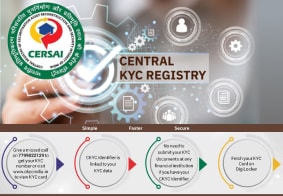CKYC Registry
-
Customer Service Contact us Service request Locate a branch
Find all the help you need
Scan the QR, get our app, and find help on your fingertips

Help CenterSupport topics, Contact us, FAQs and more
-
Login
Are you ready for an upgrade?
Login to the new experience with best features and services
-
Login
Are you ready for an upgrade?
Login to the new experience with best features and services
- Accounts
-
Deposits
IDFC FIRST Bank Deposits
View all Deposits -
Loans
IDFC FIRST Bank Loans
View all Loans - Wealth & Insure
-
Payments
IDFC FIRST Bank Payments
View all Payments -
Cards
IDFC FIRST Bank Cards
View all Cards - Blogs
- Corporate Account
-
Cash Management Services
IDFC FIRST Bank Cash Management Services
View all Cash Management Services - Supply Chain Finance
-
Corporate Lending
IDFC FIRST Bank Lending
View all -
Treasury
IDFC FIRST Bank Treasury
See more details - NBFC Financing
Support topics, Contact us, FAQs and more
- IDFC FIRST Bank Accounts
-
Savings Account
-
Corporate Salary
Account -
Senior Citizens
Savings Account -
First Power
Account -
Current Account
-
NRI Savings
Account -
TASC Institutional
Account -
Savings Account
Interest Calculator
- IDFC FIRST Bank Deposits
-
Fixed Deposit
-
Recurring Deposit
-
NRI Fixed Deposit
-
Safe Deposit Locker
-
FD Calculator
-
RD Calculator
- IDFC FIRST Bank Loans
-
Personal Loan
-
Consumer Durable
Loan -
Home Loan
-
Business Loan
-
Professional Loan
-
Education Loan
-
New Car Loan
-
Pre-owned Car Loan
-
Two Wheeler Loan
-
Pre-owned Two
Wheeler Loan -
Commercial Vehicle
Loan -
Gold Loan
-
Loan Against Property
-
Loan Against Securities
-
Easy Buy EMI card
-
Personal Loan
EMI Calculator -
Education Loan
EMI Calculator -
Home Loan
EMI Calculator
- IDFC FIRST Bank Wealth & Insure
-
FIRST Select
-
FIRST Wealth
-
FIRST Private
-
Mutual Funds
-
Sovereign Gold Bond
-
Demat Account
-
Term Insurance
-
Life Insurance
-
Health Insurance
-
General Insurance
-
Bonds
-
Loan Against
Securities -
Portfolio Management
Service
- IDFC FIRST Bank Payments
-
FASTag
-
Credit Card
Bill Payments -
UPI
-
Funds Transfer
-
Forex Services
-
Pay Loan EMI
- IDFC FIRST Bank Cards
-
Ashva :
Metal Credit Card -
Mayura :
Metal Credit Card -
FIRST Millennia
Credit Card -
FIRST Classic
Credit Card -
FIRST Select
Credit Card -
FIRST Wealth
Credit Card -
FIRST WOW!
Credit Card -
Deals
-
Debit Cards
-
Co-branded Cards
-
Credit Card
EMI Calculator -
FIRST Corporate
Credit Card -
FIRST Purchase
Credit Card -
FIRST Business
Credit Card
- Premium Metal Credit Cards
-
AshvaLifestyle1% Forex₹2,999
-
MayuraLifestyleZero Forex₹5,999
-
FIRST PrivateInvite Only
- Best for travellers
-
MayuraZero ForexMetal₹5,999
-
Ashva1% ForexMetal₹2,999
-
FIRST WOW!Zero ForexTravelLifetime Free
-
FIRST SWYPTravel OffersEMI₹499
-
FIRST Select1.99% ForexLifestyleLifetime Free
-
FIRST Wealth1.5% ForexLifestyleLifetime Free
-
Club VistaraTravelLifestyle₹4,999
-
IndiGo IDFC FIRST Dual Credit CardTravelLifestyle₹4,999
- Max benefits, Free for life
-
FIRST Classic10X RewardsShoppingNever Expiring Rewards
-
FIRST Millennia10X RewardsShoppingNever Expiring Rewards
-
FIRST Select10X RewardsLifestyle1.99% Forex
-
FIRST Wealth10X RewardsLifestyle1.5% Forex
-
FIRST WOW!RewardsTravelZero Forex
-
LIC ClassicRewardsInsuranceShopping
-
LIC SelectRewardsInsuranceShopping
- Reward Multipliers
-
AshvaLifestyleMetal₹2,999
-
MayuraLifestyleZero Forex₹5,999
-
FIRST ClassicNever Expiring RewardsShoppingLifetime Free
-
FIRST MillenniaNever Expiring RewardsShoppingLifetime Free
-
FIRST SelectNever Expiring RewardsLifestyleLifetime Free
-
FIRST WealthNever Expiring RewardsLifestyleLifetime Free
- Rewards & Credit on UPI
-
FIRST Power+FuelUPI₹499
-
FIRST PowerFuelUPI₹199
-
FIRST EA₹NVirtual1% Cashback₹499
-
FIRST DigitalVirtualUPI₹199
-
IndiGo IDFC FIRST Dual Credit CardUPITravelDual cards
- Fuel and Savings
-
FIRST PowerRewardsUPI₹199
-
FIRST Power+RewardsUPI₹499
-
LIC ClassicRewardsInsuranceShopping
-
LIC SelectRewardsInsuranceShopping
- Express and Flaunt
-
AshvaMetal1% Forex₹2,999
-
MayuraMetalZero Forex₹5,999
-
FIRST SWYPEMIOfferMAX₹499
-
FIRST MillenniaRewardsShoppingLifetime Free
- FD Backed rewarding Credit Cards for all
-
FIRST EA₹NVirtualCashback₹499
-
FIRST WOW!Zero ForexTravelLifetime Free
-
CreditPro Balance TransferTransfer & SaveReduce InterestPay Smartly
- IDFC FIRST Bank NRI Forex Solutions
-
Send money to India-Wire transfer
-
Send money to India-Digitally
-
Send money abroad
-
Max Returns FD (INR)
- IDFC FIRST Bank MSME Accounts
-
Platinum Current
Account -
Gold
Current Account -
Silver Plus
Current Account -
Merchant Multiplier
Account -
Agri Multiplier
Account -
TASC Institutional
Account -
Dynamic Current
Account -
World business
Account -
First Startup
Current Account
- IDFC FIRST Bank Business Loans
-
Business Loan
-
Professional Loan
-
Loan Against Property
-
Business Loan for Women
-
Working Capital Loan
-
Construction Equipment Loan
-
Machinery Loan
-
Healthcare Equipment Loan
- IDFC FIRST Bank Business Solutions
-
Payment Solutions
-
Tax Payments
-
Doorstep Banking
-
Point of Sale (POS)
-
Escrow Accounts
-
NACH
-
Payment Gateway
-
UPI
-
Virtual Accounts
-
As per amendment in the Income Tax Rules, PAN or Aadhaar are to be mandatorily quoted for cash deposit or withdrawal aggregating to Rupees twenty lakhs or more in a FY. Please update your PAN or Aadhaar. Kindly reach out to the Bank’s contact center on 1800 10 888 or visit the nearest IDFC FIRST Bank branch for further queries.
-
-
Most Searched
Sorry!
We couldn’t find ‘’ in our website
Here is what you can do :
- Try checking the spelling and search
- Search from below suggestions instead
- Widen your search & try a more generic keyword
Suggested
Get a Credit Card
Enjoy Zero Charges on All Commonly Used Savings Account Services
Open Account Now

In the age of digitisation, even reprimands and official penalties have taken an online avatar in the form of e-challans. Specifically in India, the term refers to an official electronic reprimand issued by the Ministry of Road Transport and Highways of the Government of India.
The government rebukes an individual found guilty of violating a traffic rule and is liable to pay a penalty. With the convenience of the internet, individuals can not only check the status of their e-challan online but also pay for it from the comfort of their home or office.
READ MORE
What is challan, and when is it issued to an individual?
In India, challan is a familiar term among motorists. Defined by the Motor Vehicles Act of 1988, a challan is an official reprimand, traditionally issued in paper format. When an individual breaks a traffic rule, the traffic police gives them a challan that cites the nature of the violation and the corresponding penalty. The essence of a challan is to hold individuals accountable for their actions on the road and ensure that traffic rules are adhered to for the collective safety of all road users.
If the traffic police monitoring these live feeds come across a violator, they first get access to your details such as your name, address, and contact number from the RTO (Regional Transport Office). This is how an E Challan is registered under a traffic violator’s name.
What are e-challans, and what are the penalties for various traffic violations?
With the rise in technology and the aim to make governmental processes seamless, the government has digitised traditional challans into what are now known as e-challans. An e-challan serves the same purpose as its physical counterpart, but with added speed, efficiency, and convenience. When the traffic police capture a traffic violation through surveillance cameras or manual policing, the violator receives an SMS notification. This message details the nature of the violation and the penalty amount. The transition from paper to digital format ensures swifter communication and promotes transparency in the penalty process.
If the traffic police monitoring these live feeds detects a violator, they first access your details like your name, address, and contact number from the RTO (Regional Transport Office). After this procedure, the police issues them an e-challan. The traffic violator receives a message notifying them about the violation and the penalty. Here is a non-exhaustive list of violations that could attract an e-challan and their respective penalties:
- General offences: ₹ 500 for the first time, ₹ 1500 for a subsequent offence.
- Driving without a license: ₹ 5000
- Unauthorised use of vehicles without a license: ₹ 5000
- Over-speeding: Light motor vehicles - ₹ 1000 to ₹ 2000; Medium passenger or goods vehicle - ₹ 2000 to ₹ 4000; for second subsequent offence: the driver’s license will be confiscated.
- Dangerous driving: A 6-month-to-1-year-long imprisonment and/or a penalty of ₹ 1000 to ₹ 5000 for the first time; An imprisonment of up to 2 years and/or penalty of up to ₹ 10,000 for the second time.
- Driving under intoxication: A 3-month-long imprisonment and/or a penalty of ₹ 2000 for the first time; An imprisonment of up to 3 months and/or a penalty of ₹ 4000 for the second time.
- Seat belt violation: ₹ 1000
- Not wearing a helmet: ₹ 1000 and your license could be disqualified for 3 months.
- Disobedience of orders of authority: ₹ 2000
- Causing traffic obstruction: ₹ 500
How can one pay e-challan penalties online?
1. Visit the e-challan website:
The Ministry of Road Transport and Highways provides an official portal where e-challans can be checked and paid. The portal is user-friendly and secured, ensuring your personal and financial details remain confidential.
2. Log in with your credentials:
Once on the portal, a user should provide valid identification, usually in the form of a mobile number or email, which the site will use to send an OTP (One-Time Password) for verification purposes.
3. Choose a search option:
After logging in, individuals can check the status of their e-challan via several methods. Users can search using a DL (Driving License) Number, E-challan number, or vehicle number. After entering the required details, the website will show the relevant e-challan details, and users can proceed to make the payment.
In conclusion
The introduction of e-challans in India signifies a stride towards digital transformation and good governance. This system not only speeds up the penalty process but also makes it convenient for individuals to clear their dues without physically visiting any office. With a few clicks, citizens can keep their traffic records clean, reinforcing a collective commitment to road safety and rule adherence.
Disclaimer
The contents of this article/infographic/picture/video are meant solely for information purposes. The contents are generic in nature and for informational purposes only. It is not a substitute for specific advice in your own circumstances. The information is subject to updation, completion, revision, verification and amendment and the same may change materially. The information is not intended for distribution or use by any person in any jurisdiction where such distribution or use would be contrary to law or regulation or would subject IDFC FIRST Bank or its affiliates to any licensing or registration requirements. IDFC FIRST Bank shall not be responsible for any direct/indirect loss or liability incurred by the reader for taking any financial decisions based on the contents and information mentioned. Please consult your financial advisor before making any financial decision.
The features, benefits and offers mentioned in the article are applicable as on the day of publication of this blog and is subject to change without notice. The contents herein are also subject to other product specific terms and conditions and any third party terms and conditions, as applicable. Please refer our website www.idfcfirstbank.com for latest updates.






















